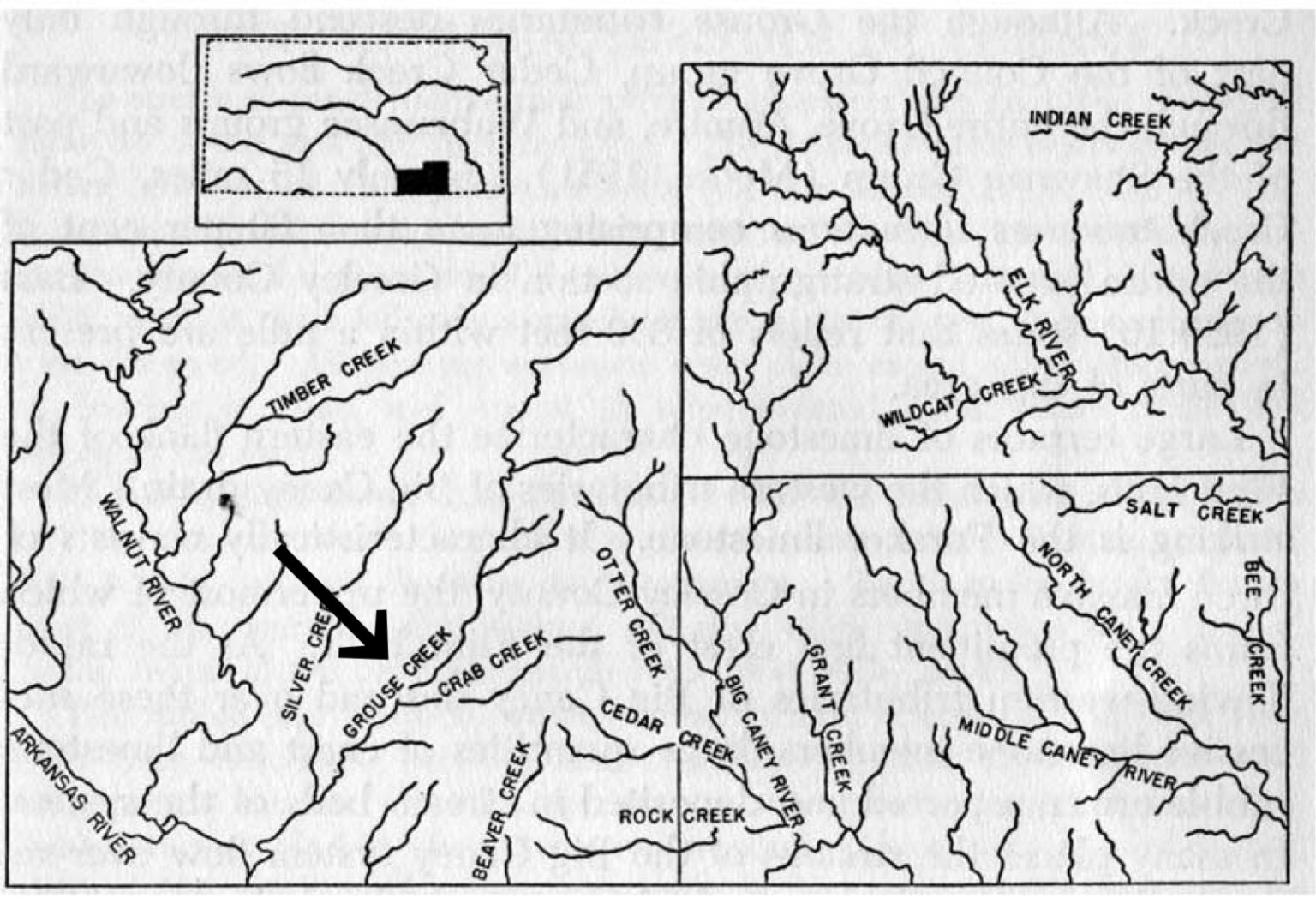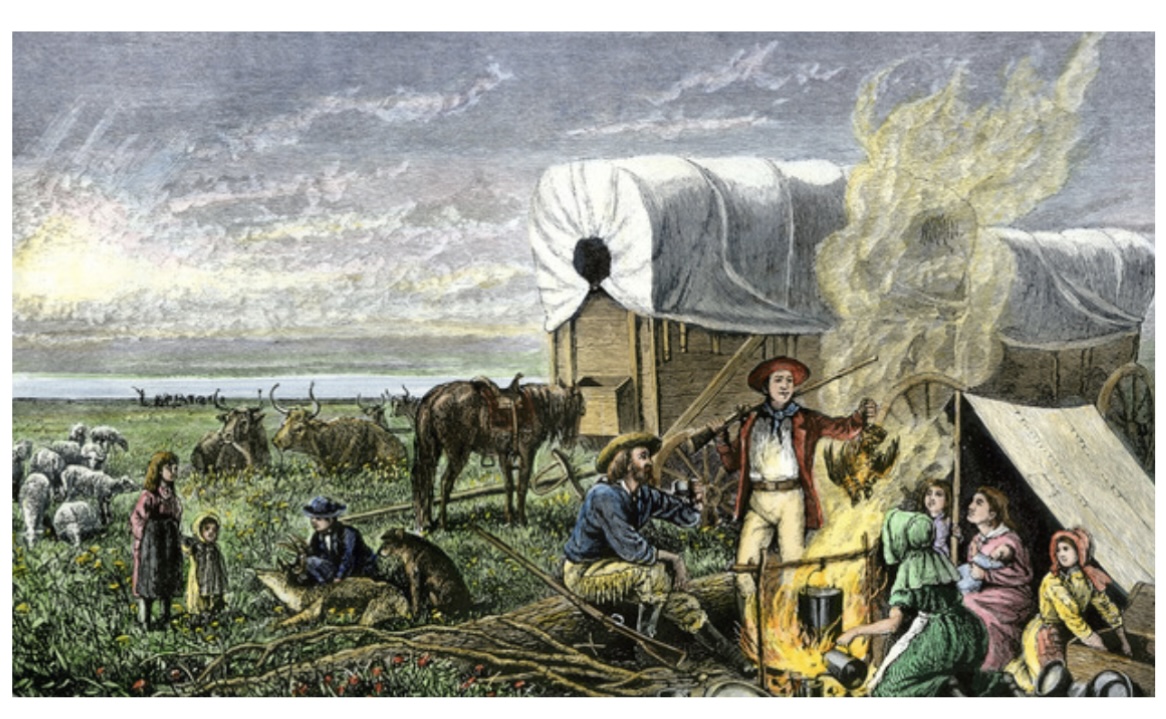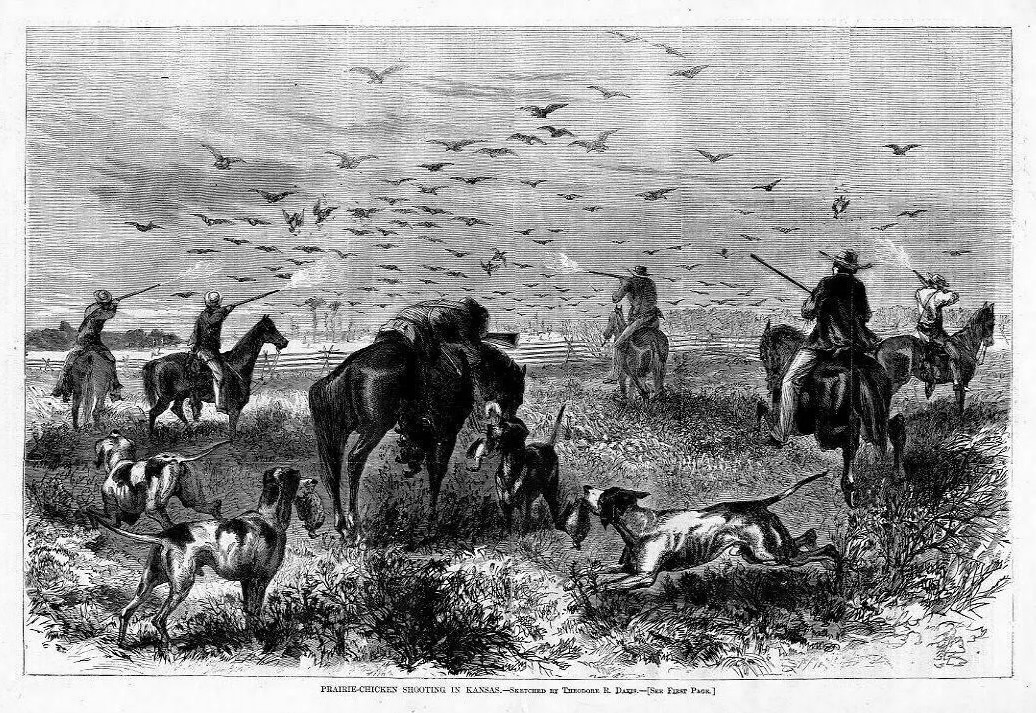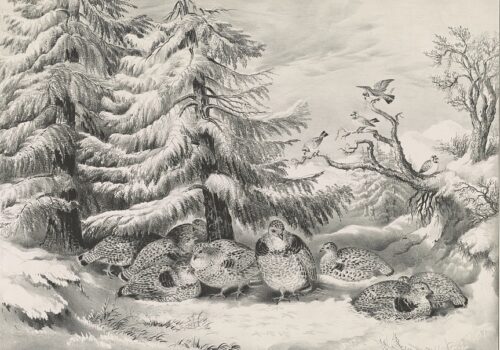
Grouse Creek
By Edgar Castillo
Because early people depended on bodies of water for survival and travel, they were among the first geographical features to receive names. They served as key points and markers. Their names were given by the Indigenous people, plainsmen, voyaging pioneers, settlers, explorers, and hunters. In fact, these waterways were probably known by the same or similar names or description by Native Americans, using words expressing the same meaning or description.
The origin of names attached to some Kansas creeks, streams, and rivers are mostly known. Others are unknown or uncertain. Some waterways names have been lost to history. Their stories as to why they were named, forgotten. They are now merely erected signs to passing motorists and hikers who cross them.
Grouse Creek, Ks is one of those. The creek’s namesake – the grouse – is a game bird and was named after the abundant numbers of birds that flourished in the area.
Grouse? In Kansas? Yes. Two types of prairie grouse to be exact. The Greater and Lesser Prairie Chicken. Both types of plains grouse were very prominent across the prairies of the Sunflower State up until the early part of the 20th century. Written and eyewitness accounts of staggering numbers were often chronicled in journals and observed during travel. Their numbers have significantly declined, affected by agriculture and the loss of crucial natural habitat. There are still strongholds scattered about in regional pockets throughout the state.
The 4.42-mile-long creek is situated in Cowley County, Ks between the towns of Dexter and Silverdale. Grouse Creek is within easy distance of Wichita and Emporia, each major hubs for cattle and commerce during the time period. It lies about twenty miles from the Oklahoma border in the southeastern part of the state. The creek is nestled in what old-timers in the 19th century used to refer to as Grouse Valley. Again, named for the numerous grouse found across the low area of land that was surrounded by rolling mounds of the southern portion of the Flint Hills.

Grouse Creek, often referred to as “the grouse” in the mid-1800s, is a well-watered, pristine, south flowing creek. In the 1830s the two-hundred-mile, road-like passage, The Osage Indian Black Dog Trail, ran east and west, crossing the creek. Thousands of people, wagons, horses, and cattle passed along the flowing streamlet at least twice a year. Those early trailblazers used Grouse Creek as a reliable source for clean, running water. The creek also supplied important timber belts for building and lumber materials, livestock shelter, and its bottomland made for fine crops and orchards. The area was bountiful with wild game, turkey, waterfowl, quail, and of course…grouse or prairie chickens. For the early settlers, prairie chicken was a regular diet item. They were relatively easy to procure through mass shooting of huge flocks or caught with vast nets.
Research was unable to pinpoint exactly when the creek was officially named. However, it is known that in 1856, two years after the Kansas-Nebraska Act, the territory was being extensively surveyed. U.S. Army Lieutenant Ingraham wrote in his journal he had crossed Grouse Creek in March of that year. Using this as a baseline, it is highly evident that Grouse Creek had received its name prior to him arriving at the junction.
Historical references in journals, diaries, logs, and history books tell us just how prominent prairie grouse were in the surrounding area. They are almost incidentally described, yet their existence is powerful enough to be accounted for.

1868 “That summer and fall buffalo were hunted for winter meat by Wichita…and always there were prairie chickens, thousands of them…” – diary, Wichita
1869 “We had camped a day’s ride south of Emporia…on the prairie were plenty of prairie chickens.” – journal, Emporia
1871 “…the gun and the trap were the main dependence. One winter Mr. Ferrier shot, and trapped over 600 dozen prairie chickens, which he shipped to Wesport.” – Kansas Historical Archives, Butler County
1871 “Edward Strasser and his son, George came to Butler Co. Edward became a professional hunter, and hunted quail and prairie chickens which he killed in considerable quantity. Some accounts said that it was by the thousands and killed a great many of them in the early days, they being a common article of food with the early settlers.
“Some accounts said that it was by the thousands and shipped them to St. Louis, Mo. Markets. It developed into quite a profitable-business and the money which Edward received in this way.” – Kansas Historical Archives, Butler County
1873 “Prairie chickens were so plentiful that they frequently destroyed crops.” – diary, McPherson County
1875 “Grouse were so plentiful that when great flocks rose in the air, they sounded like thunder.”
1877 “…and prairie chickens were to be found in great numbers in Butler County when we first came here…” – diary, Butler County
1878 “…walking along the creek, we could see grouse perched atop trees…they took to flight from the hills in small clouds, flying to the horizon.” – diary, Dexter
1879 “…we rode half a day west from the Grouse and found flocks of prairie chickens…over two dozen were shot…” – journal, Silverdale
1881 “the prairie was almost alive with prairie chickens…” – journal, Silverdale
1882 “…prairie chickens were common in those days and we only used the breasts, and a little boy and I had to pick them. We also had to clean quail.” – diary, Walnut (renamed Arkansas City)
1884 “…huge flocks of hundreds of prairie grouse would fly into feed at first light from their roost. It was truly a remarkable sight.” – Kansas Historical Archives, Butler County

Dozens of entries were found that reflected on the sheer number of grouse that were observed. It is evident grouse were so visually impactful to the people inhabiting the area as well as those passing through that written accounts were made of the birds. They served as a crucial food source and a profitable livelihood for market hunters. It is no wonder that Grouse Creek took its name from the extensive amount of prairie chickens within the entire vicinity.
In present times, local businesses have taken on references that reflect back to the area’s past. Names such as Grouse Creek Outfitters, Grouse Valley Lodge, and a host of others are what stand, connecting them to Grouse Creek or Grouse Valley.
Prairie chickens can still be seen in the area, however visions of massive flocks of prairie chickens with their telltale flight pattern of flap, glide, fast flap, glide motions are sadly gone. They are but visions of the past sadly. Numbers so great that they will never be witnessed nor written about again. Grouse Creek is but a subtle reminder of how a flowing brook got its name. Its story, also lost to history.
To explore hunting opportunities and gather information, please visit the Kansas Department of Parks & Wildlife website.
Edgar Castillo
Edgar Castillo is a recently retired law enforcement officer for a large Kansas City metropolitan agency. He also served in the United States Marine Corps for twelve years. Edgar’s passion lies in the uplands as he self-documents his travels across public lands throughout Kansas hunting open fields, walking treelines, & bustin’ through plum thickets in search of wild birds. He’s a contributing writer for several publications and e-magazines/websites. Follow the author’s adventures on Instagram @hunt_birdz


You May Also Like

A Carolina Christmas…in the Southern uplands
December 17, 2020
Something Old, Something New.
January 10, 2024

2 Comments
Matt Ludwig
Great piece, Edgar! It’s crazy to think that so many birds once graced those grasslands, and sad to know there’s now so few. Stories like this remind us how precious these birds are and how fragile their continued existence is.
Rob Unruh
Fantastic historical citing Edgar!
I have a story about hunting “chickens ” by Dexter. Brought back memories of realizing I had cold, wet feet that I quickly forgot about once the chickens flew.